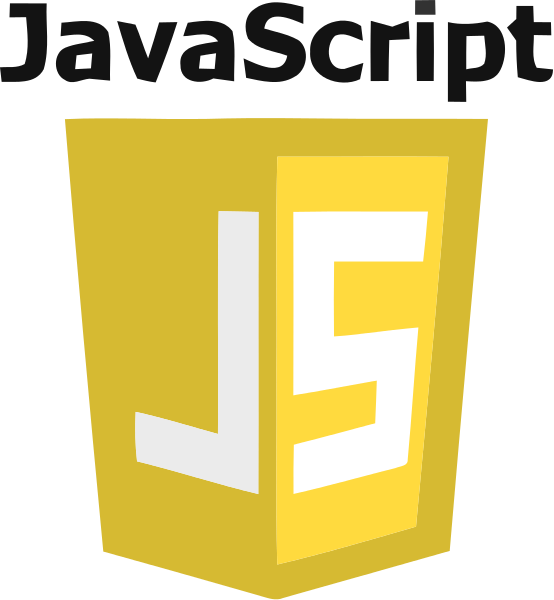Difference Between JavaScript and AngularJS
JavaScript is a general-purpose high-level programming language used to create dynamic websites and web applications to run in the client’s web browser. It’s basically a client-side scripting language which provides interactive effects within web pages to make the website look more dynamic. It’s a full-featured programming language that runs in a web browser. AngularJS (also known as Angular), on the other hand, is a JavaScript-based framework which extends HTML with new attributes and is specially designed to build dynamic single-page web applications (SPAs). It’s a front-end web application framework developed and maintained by Google which actually does all the heavy lifting on the client-side, while providing a rich experience for the end user. It has become one of the most powerful web application frameworks based on JavaScript that is used for front-end web development.

What is JavaScript?
JavaScript is a multi-paradigm programming language developed by Netscape to add interactivity to websites such as animation, dynamic styling, user responses, etc. It’s one of the most versatile scripting languages that is synchronous with the client-side scripting and is based on the concept of object-oriented programming. It’s an incredibly powerful yet ubiquitous language of the web which is used by nearly web developer, even back-end developers. It’s one of the core technologies of the World Wide Web, alongside HTML and CSS. The name may sound a bit misleading, but it has nothing to do with the Oracle’s Java. In simple terms, it brings web pages to life by adding interactive effects within web browsers and manipulating the content to create dynamic effects. It doesn’t interact with the server end of the web browser; in fact, it only deals with the interactive aspects of a website on the front-end.

What is AngularJS?
AngularJS, commonly known as simply “Angular”, is a full-featured web application framework based on JavaScript and maintained by Google. It’s a structural framework which provides a quick way to create large, single-page web applications (SPAs) using HTML as the template language. Front-end web developers mostly rely on JavaScript to add interactivity to web pages by manipulating content of the website and where there’s JavaScript, there surely will be frameworks and libraries. Well, there are plenty of frameworks available to make front-end development as easy as possible, but AngularJS is a comprehensive tool for rapid front-end development. It takes a modular approach to web development and handles all the heavy lifting, and MEAN stack (MongoDB, Express, Angular, and Node.js) is an added advantage. MEAN is a full-stack development toolkit based on JavaScript technologies to develop web applications.
Difference between JavaScript and AngularJS
Basics of JavaScript and AngularJS
JavaScript is a multi-paradigm high-level programming language that deals with client-side scripting to develop dynamic web pages and web applications. It’s also capable of handling server-side programming as well. AngularJS, on the other hand, is a web application framework written in JavaScript used to build large, single-page web applications.
Function of JavaScript and AngularJS
JavaScript is a prominent web development technology used to add interactive effects within websites to make them look more dynamic. It manipulates the content on the websites without interacting with the server-side browser to create dynamically rich web pages. AngularJS is a JavaScript tool that provides a structured framework to build SPAs from scratch.
Programming for JavaScript and AngularJS
Developers and programmers can do both client-side and server-side programming using JavaScript to create dynamic web applications to improve interactivity within websites. AngularJS, on the other hand, is a front-end JavaScript-based framework developed and maintained by Google which does all the heavy lifting of DOM manipulation.
Simplicity in JavaScript and AngularJS
JavaScript has been among the most powerful web development technologies used for powering web applications. It’s a versatile programming language which is often seen as one of the most misunderstood languages because of its complexity. Well, the complexity never lies in the language itself – it is in the frameworks and libraries. AngularJS is the most preferred JavaScript framework used to create interactive components within a website. It’s specially designed to enhance simplicity and efficiency.
Expressions of JavaScript and AngularJS
Expressions bind application data to HTML. Both JavaScript expressions and AngularJS expressions can contain variables, operators, and literals. While JavaScript expressions support loops, conditionals and exceptions, AngularJS expressions do not. At the same time, AngularJS expressions support filters, whereas JavaScript expressions do not support filters.
JavaScript vs. AngularJS: Comparison Chart

Summary of JavaScript vs. AngularJS
JavaScript is a programming language used for web development to improve interactivity within web sites. It helps manipulate content on the websites to validate user input at the browser end thereby influencing user actions by including dynamic content such as drag and drop components, sliders, etc. It’s one of the three core technologies of the World Wide Web and also the basic of all JavaScript technologies. AngularJS, on the other hand, is an open-source framework written in JavaScript and based on MVC architecture, which specializes in building large single-page web applications. It’s a data-driven approach that allows web applications to have an expanded HTML library. It’s a platform for the future to achieve huge data requirements without needing to refresh Models.
- Difference Between Caucus and Primary - June 18, 2024
- Difference Between PPO and POS - May 30, 2024
- Difference Between RFID and NFC - May 28, 2024
Search DifferenceBetween.net :
Leave a Response
References :
[0]Green, Brad and Shyam Seshadri. AngularJS. Sebastopol: O’Reilly Media, 2013. Print
[1]Willamson, Ken. Learning AngularJS: A Guide to AngularJS Development. Sebastopol: O’Reilly Media, 2015. Print
[2]Crockford, Douglas. JavaScript: The Good Parts. Sebastopol: O’Reilly Media, 2008. Print
[3]Image credit: https://upload.wikimedia.org/wikipedia/commons/thumb/c/ca/AngularJS_logo.svg/500px-AngularJS_logo.svg.png
[4]Image credit: https://upload.wikimedia.org/wikipedia/commons/thumb/b/ba/Javascript_badge.svg/554px-Javascript_badge.svg.png
